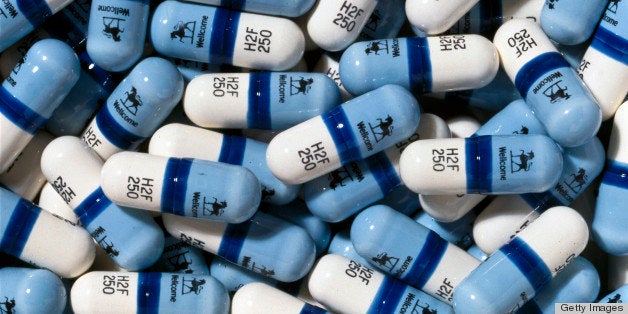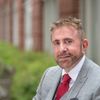
According to the Centers for Disease Control and Prevention (CDC), HIV infection rates in the United States increased by 12 percent for gay, bisexual and other men who have sex with men (MSM) between 2008 and 2010, but they decreased by 18 percent percent for heterosexual women and remained stable for heterosexual men over that same period. The increase in infection rates for gay, bisexual and other MSM is cause for alarm. Over the decades of battling HIV, we've developed a large body of social science to inform HIV prevention. However, our knowledge about prevention largely has been ignored, especially in the area of interventions that would help men who belong to sexual minorities. New medical treatments have saved or improved millions of lives, but we could save many more if we developed scientifically directed prevention policies as well. And this will require conversations, ones like the panel I am moderating this May 9 in New York City, "Is This My Beautiful Life?", with a host of survivors, activists and experts.
In the early days of the AIDS epidemic, many gay men grappled with how best to approach and combat the deadly disease. Even after the development of HIV antibody testing in 1985, the decision to test was not always an obvious choice, given the lack of effective treatments at that time. Today we encourage testing and treating, given the multitude of highly effective antiviral options, which not only bestow a health benefit on the infected person but serve as a public health strategy in reducing the amount of circulating virus in the population. But in the 1980s and early 1990s this was hardly the situation. We need to adjust to a "new normal" but remain vigilant.
In my upcoming book, The AIDS Generation: Stories of Survival and Resilience, I share the life stories of 15 remarkable gay men who bravely navigated these pioneering days of the AIDS epidemic, a time when many of us had very limited understandings of the disease and few viable options for fighting the virus, but abundant hope and optimism to overcome this challenge.
Richard was one of the men I interviewed for the book. An accomplished musician, Richard has managed to survive and thrive into middle age after overcoming numerous life-threatening conditions over the last two decades. When we spoke of his initial diagnosis, Richard was candid and clear about this moment in his life. For him, testing for HIV was an act that he avoided until 1993, believing that even if the test revealed what he had suspected, there was very little that he could do. He described it as follows: "I thought, 'If I know I have HIV, I'm only going to make myself sick ... because there's no cure for it anyway, so what matters? What difference does it make?'"
In the first decade and a half of the epidemic, the treatment options were truly limited. Moreover, those that were available, such as AZT, were fraught with complications. The effectiveness of that particular antiviral was undermined by its toxicity, as well as by misunderstandings about appropriate dosing. As a result, much confusion swirled around how and when one should treat with AZT. I remember this time extremely well. My partner, Robert Massa, who was a writer for The Village Voice, penned a scathing article attacking New York Times writer Gina Kolata's misinterpretation of the findings of an AZT study. Her news story on the dosing and effectiveness of AZT was "unfit to print," he wrote.
Antoine, another of the men featured in the book, was diagnosed in 1986. At the time of our interview, he was 53 years old. When we spoke about the early treatment, including AZT, he approached the topic with a sense of humor:
The AZT was horrible. No, I wouldn't take it, because I watched it do what it did to Robert and what it did to three of my friends, as they politely stated, and as, when I lived in San Francisco, Sylvester said to me, "I am not taking this drug, because I'm finally down to a size 10. Let's go shopping."
During this epoch of the AIDS epidemic, concern about treatment was not confined solely to AZT but included the newer drug options of the time, including ddI, ddC, d4T and 3TC. Mark Harrington, a co-founder and the current executive director of the Treatment Action Group (TAG), an organization that grew out of ACT UP and recently celebrated its 20th anniversary, described that era's state of affairs in the agency newsletter tagline as follows:
AZT attacked the bone marrow, causing anemia. ddI, ddC, and d4T caused serious nerve damage, and sometimes pancreatitis. 3TC appeared the most benign of the first five nucleoside RTIs approved by FDA, but it was also the last to market. By themselves, none of the nucleosides worked for very long against HIV.
For these reasons, many of those who were leading us in the fight for treatments, including Harrington, the rest of the TAG group and, through his journalism, Robert, approached all these treatments "advances" with great caution.
It was within this backdrop that Richard, a highly astute man who is well versed in the treatment literature, approached his decision to test for HIV:
I remember making a very firm decision that I was not going to go to a doctor, because they didn't have any treatment, and thinking, "What's the purpose? And if they start putting me on all these poisons that don't work, it's going to make it worse. It's going to kill me."
Conditions have changed remarkably since these early days of the epidemic, and radically since 1996. Myriad highly effective and less toxic antiviral formulations are readily available and are assisting in the maintenance of our health. There is therefore no reason, theoretically, to not "test and treat." Moreover, a subset of these antivirals, if dosed properly, can also be utilized in the form of PrEP (pre-exposure prophylaxis) to confer protection from the acquisition of HIV in the first place.
Yet one is left to wonder why, in this time of great medical advances to contain the disease, only 25 percent of all HIV-positive Americans manage to reduce the amount of circulating virus in their bodies to undetectable levels. Why do many of those who access PrEP as a means of prevention fail to dose it properly? For those of us who lived through the darkest hours of the epidemic and desperately hoped for effective treatments, this must seem like anathema. Perhaps we say, "If only they walked in our shoes."
Perhaps, as I say, this condition is clear evidence that a simple biomedical approach to HIV won't cut the mustard. For any prevention or treatment to be effective, we must attend to all aspects of HIV, including the emotional and social conditions that shape all people's lives. We have to look to the social science data we've collected on prevention and the factors that influence availability and consistency of treatment. In the end it's about more than "test and treat." That's too simple an answer to a complex disease.
